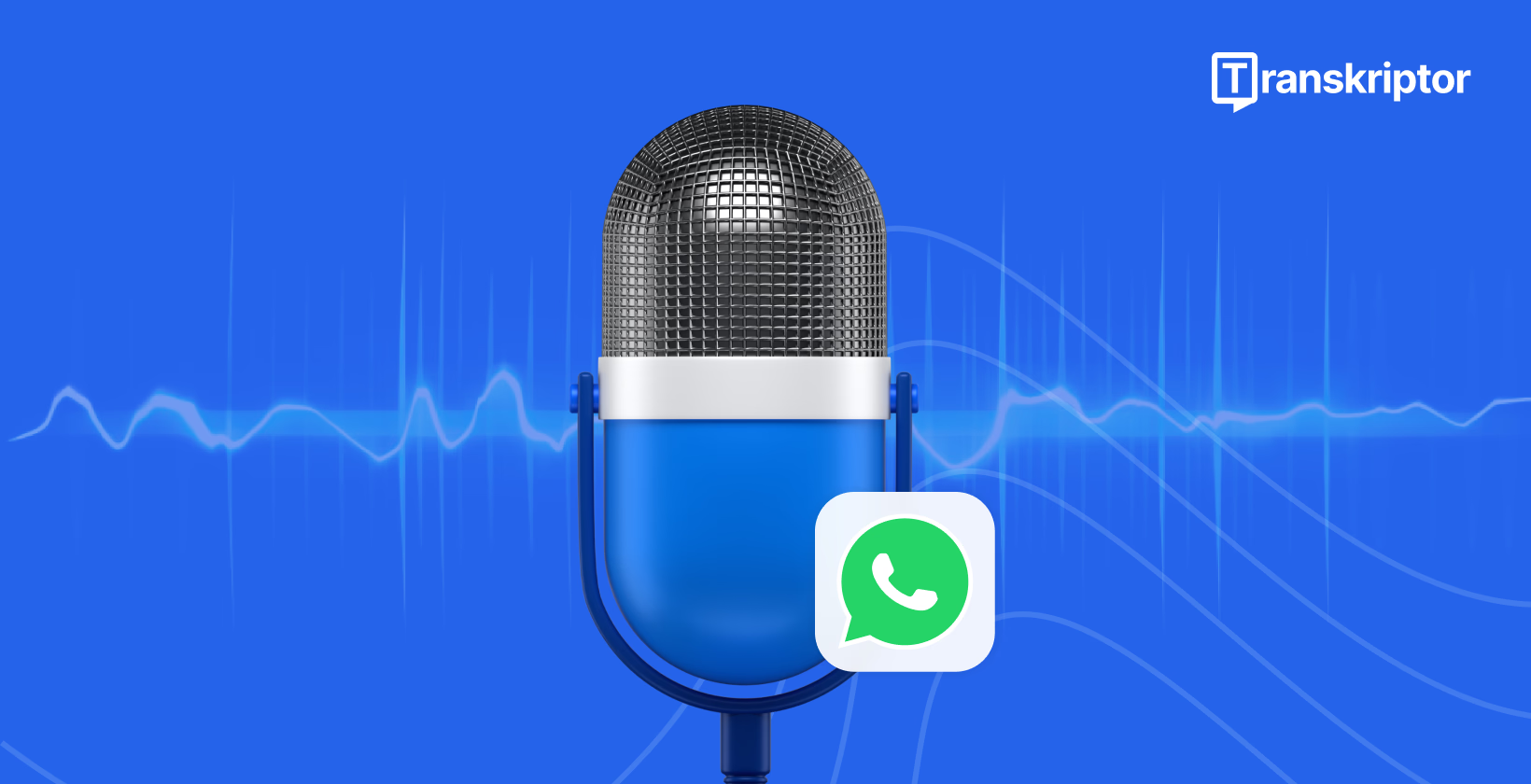
How to Dictate a WhatsApp Message?
Transcribe, Translate & Summarize in Seconds
Quick Answer: To dictate a WhatsApp message, open the app, select a chat, and tap the message field to bring up the keyboard. Hold the globe icon (iOS) or spacebar (Android) to set the correct language, then tap the keyboard’s microphone icon (not the voice message button). Speak clearly, including punctuation aloud (e.g., “Hi, comma, how are you question mark”), and tap the mic again to stop. Review and edit the text if needed, then tap send. Ensure WhatsApp is updated and microphone permissions are enabled. Dictation is three times faster than typing, making it ideal for quick, hands-free messaging.
According to Stanford University research, speech recognition is three times faster than typing on mobile devices, making spoken input convert to editable text instantly.
Note: WhatsApp must be updated to the latest version, and microphone access must be granted for dictation to work properly.
The following six steps show how to dictate WhatsApp messages accurately and send them through the chat interface.
- Open WhatsApp: Launch the WhatsApp app on your smartphone and access your chat list.
- Select a Conversation: Tap an existing chat or start a new one by selecting a contact through the search or chat icon.
- Activate the Phone’s Keyboard: Tap the message input field to display the keyboard on your screen.
- Set Language: Hold the globe icon (iOS) or spacebar (Android) to choose the correct dictation language.
- Start Dictating: Tap the keyboard microphone icon, speak clearly with punctuation, and then tap again to stop.
- Review and Send: Edit the transcribed message if needed, then tap the send icon to deliver it.
1. Open WhatsApp
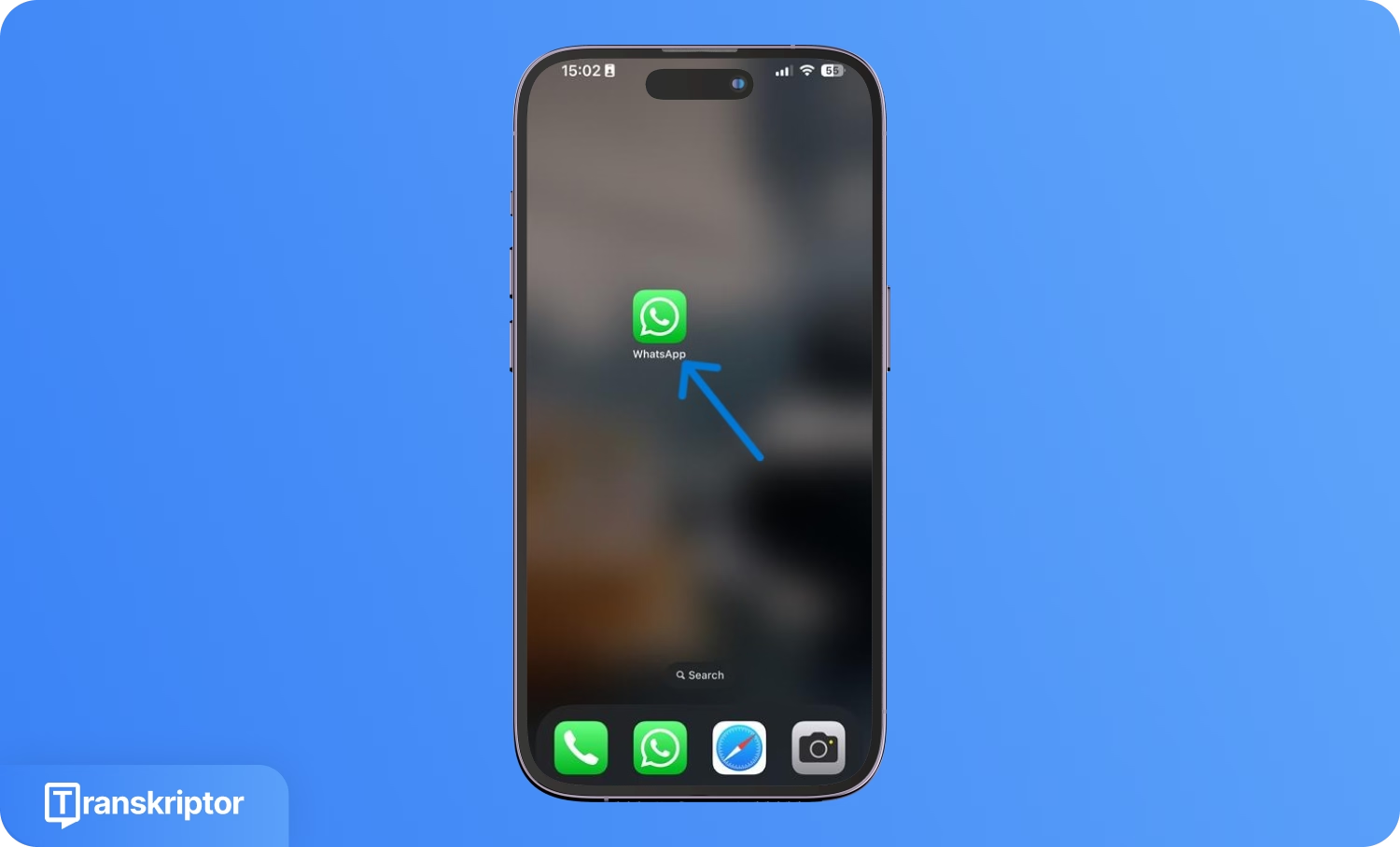
Launch the WhatsApp application by tapping the icon on a smartphone’s home screen or app drawer. Once the app opens, the main interface displays a list of recent chats.
If the app does not open correctly or behaves unexpectedly, users should check for updates in the App Store (iOS) or Google Play Store (Android) to confirm the latest version is installed.
Updated versions provide better compatibility with voice typing functions and audio transcription capabilities.
2. Select a Conversation
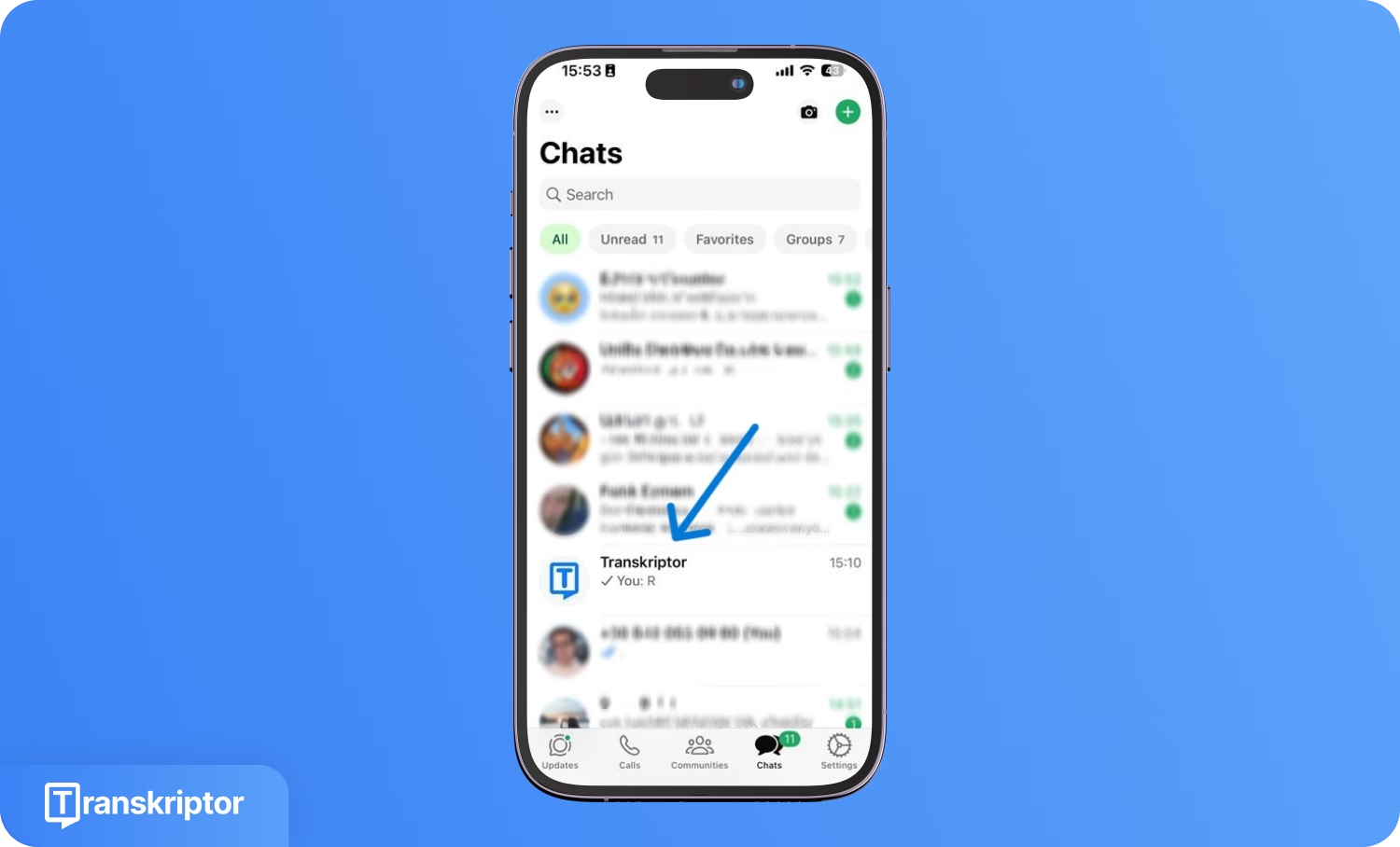
Users can scroll through the chat list and tap the conversation where a dictated message will be sent.
To start a new chat, the chat icon in the bottom right corner on iOS or the message bubble on Android can be tapped. A contact can be located quickly using the search bar at the top of the screen.
Once a chat is selected, the window opens with the text input field visible at the bottom, ready to receive dictated input.
The chat interface is then prepared for speech-to-text input and hands-free messaging.
3. Activate the Phone's Keyboard
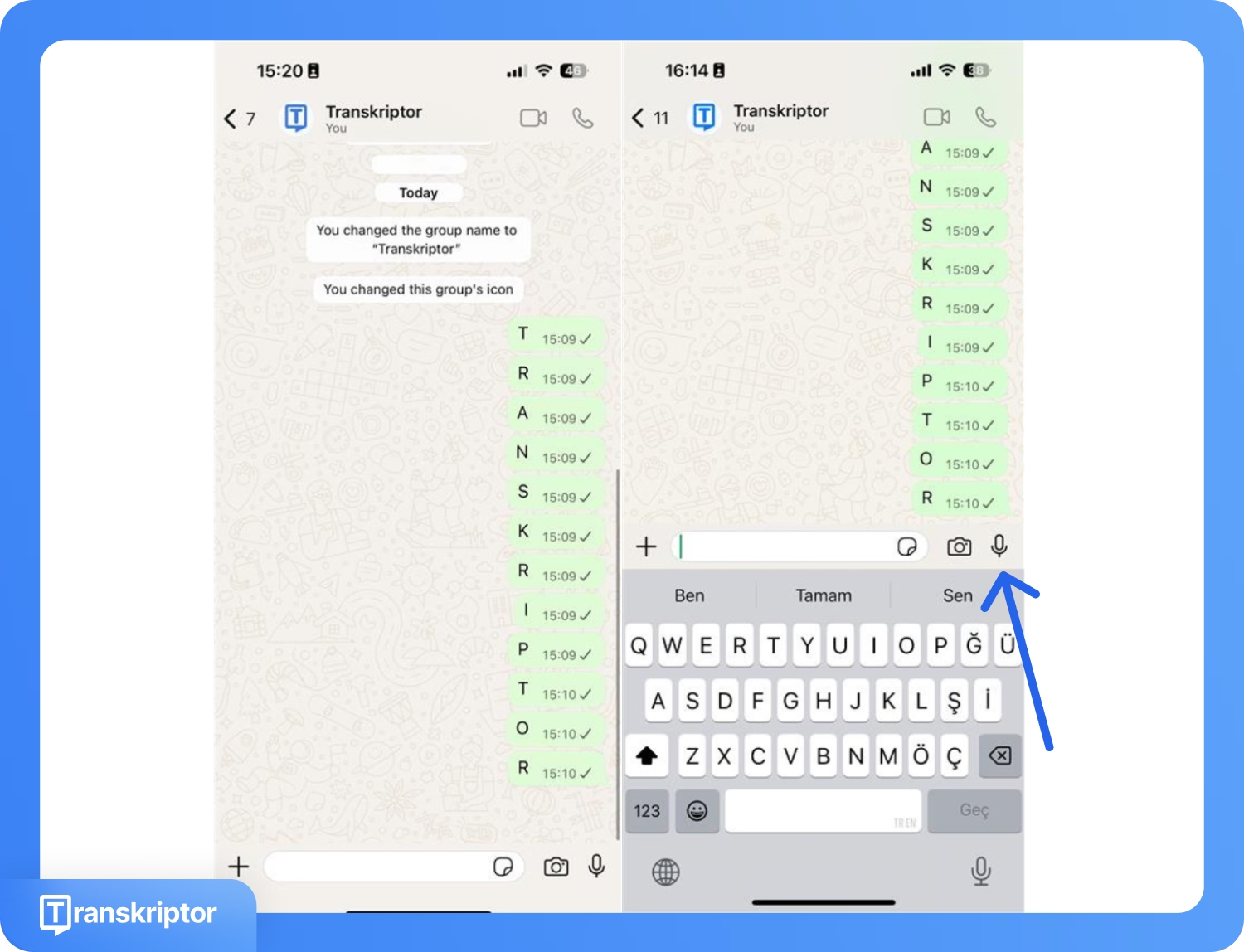
The message input field at the bottom of the chat screen should be tapped to bring up the phone’s on-screen keyboard. The on-screen keyboard is required to access the microphone icon used for voice typing functionality.
For optimal performance, iOS requires Siri to be enabled in system settings, while Android requires active Google app permissions. Gboard is recommended. The keyboard should be set to match the spoken language by holding the globe icon (iOS) or spacebar (Android) for accurate recognition.
Research from Microsoft's speech recognition team demonstrates that professional systems can achieve word error rates as low as 5.1% under optimal conditions, according to a milestone study published in Microsoft Research. Real-world performance varies significantly based on environmental factors and system configuration.
Samsung users should enable Samsung voice-to-text by going to Settings > Samsung keyboard > Samsung voice input to access the microphone icon. Performance improves with noise-canceling microphones and quiet environments.
iPhone users must activate iPhone’s dictation through Settings > General > Keyboard > Enable Dictation to use voice input in WhatsApp and other apps.
4. Start Dictating Message
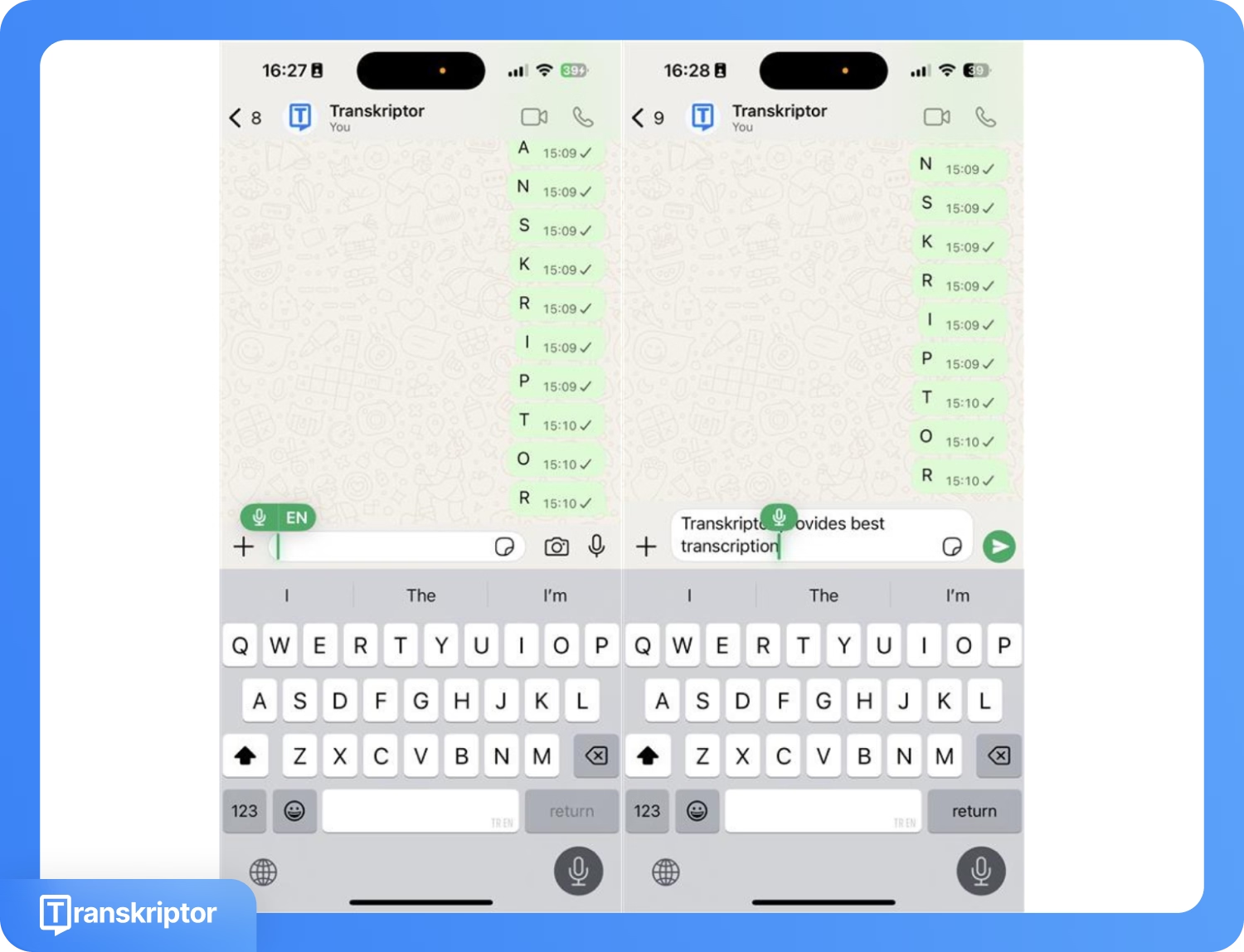
The microphone icon located on the on-screen keyboard activates speech-to-text input, not audio recording or voice messages.
iOS: The microphone is typically near the space bar or in the bottom row of the keyboard.Android: The microphone icon usually appears in the top right corner of the Gboard keyboard.
Note: If the microphone icon is not visible, users should check keyboard language settings and confirm that microphone permissions are enabled in device settings. The microphone icon may not appear if the system requirements are not met.
The WhatsApp voice message button records audio instead of converting speech into text and should not be used for dictation. Users should tap the keyboard's microphone icon to begin dictation. A visual indicator, such as a sound wave or color change, shows that the device is actively listening for voice commands.
Speech should be delivered clearly at a steady pace, with punctuation included by speaking it aloud (e.g., "comma," "period"). Voice typing works best in quiet environments with minimal background noise. Tapping the microphone icon again stops dictation.
5. Review and Edit the Message
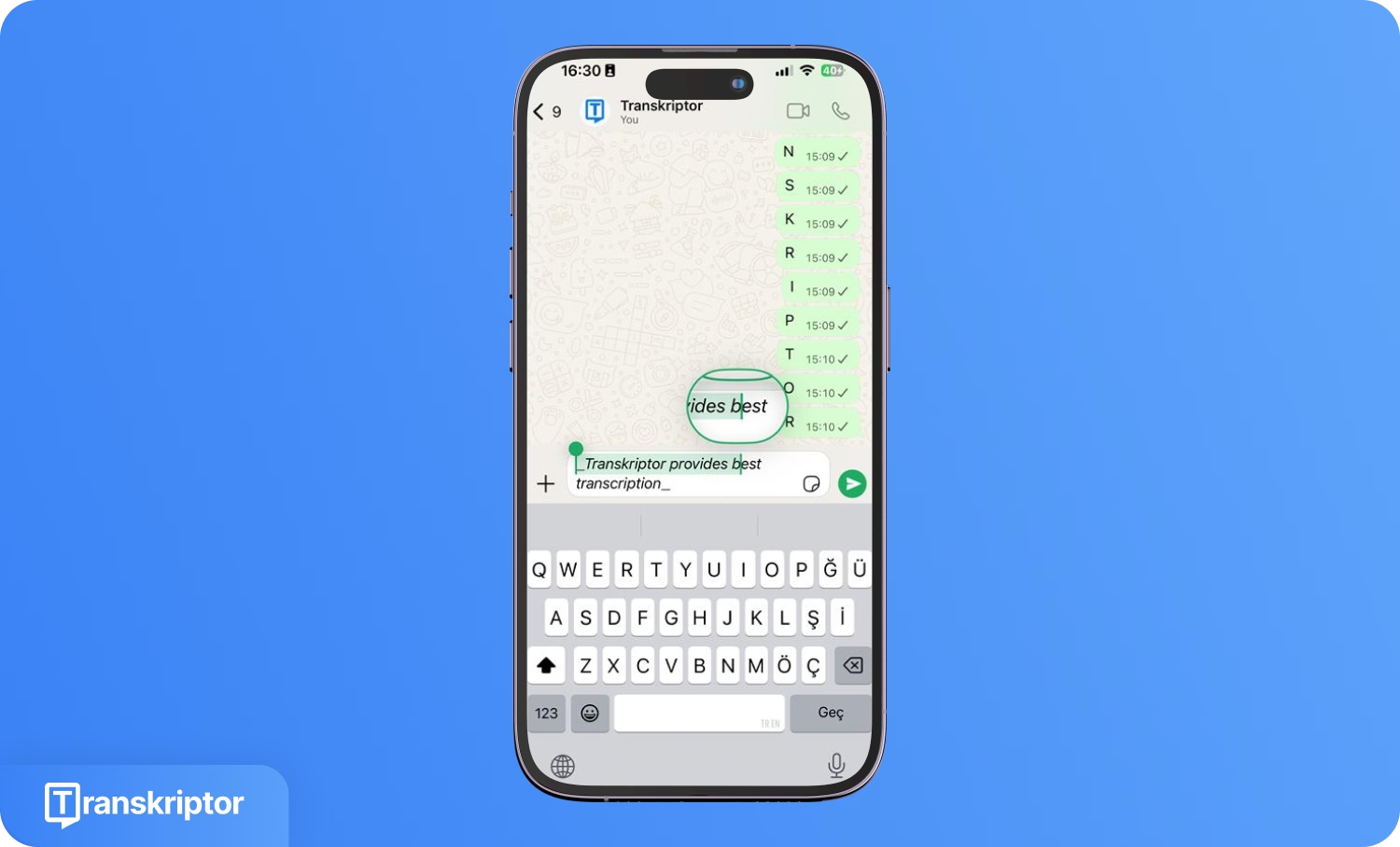
Once dictation ends, the spoken words appear as text in the WhatsApp input field.
The message should be reviewed to confirm that punctuation, word spacing, and phrasing are accurate, as speech recognition occasionally misinterprets words in variable conditions.
If corrections are required, the following four steps refine the dictated message.
- The text field should be tapped to reopen the keyboard.
- The message area requiring correction should be tapped to place the cursor.
- The magnifying glass tool (on iOS) can be used for precise cursor placement in long messages.
- The keyboard should be used to add, delete, or adjust any part of the message.
Speech recognition accuracy varies depending on environmental conditions, speaker clarity, and language settings. Reviewing the transcribed text ensures that the final message reflects the speaker’s intent before sending.
6. Send the Message
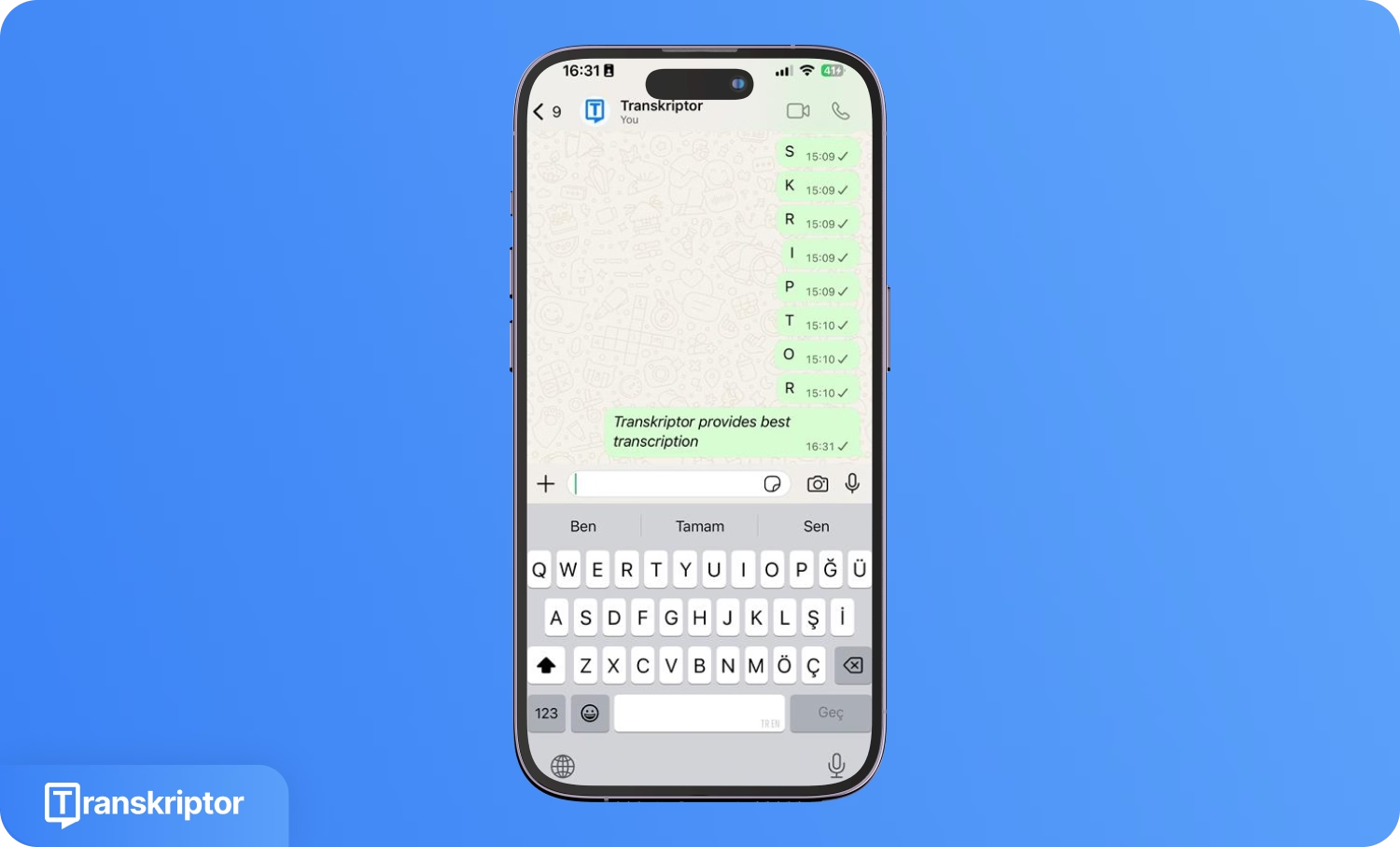
Once the message appears accurate, the send icon, represented by a paper plane and located to the right of the input field, can be tapped to deliver the message.
WhatsApp shows delivery status using checkmarks as shown in the following.
- One gray checkmark: Message sent from your device
- Two gray checkmarks: Message delivered to the recipient's device
- Two blue checkmarks: Message read by the recipient (if read receipts are enabled)
Checkmark indicators confirm whether the message has been sent, delivered, and viewed.
WhatsApp Dictation vs Transcription: Which Should be Used?
WhatsApp offers both dictation and transcription capabilities, but each supports a different aspect of messaging. Dictation is used to create outgoing messages by speaking into the keyboard's microphone through speech-to-text conversion. Transcription converts incoming voice messages into readable text for audio-to-text review. Selecting either option depends on whether a message is being sent or received.
Use WhatsApp dictation when specific conditions make voice typing more practical than manual input.
- You want to send a message quickly without typing.
- You’re multitasking; walking, cooking, or driving hands-free.
- Your hands are occupied, or you need an accessible input method.
- You’re in a private environment where speaking aloud is practical.
Use WhatsApp transcription when circumstances make reading voice messages more suitable than listening.
- You receive a voice message but can't play the audio out loud.
- You're in a public or noisy space (subway, cafe, office) where listening is difficult.
- You're in a quiet place (library, meeting room) where audio playback would be disruptive.
- You need to read messages faster or skim for important details.
- You prefer written records for reference or need searchable message content.
- You require text due to hearing limitations or work constraints.
Why WhatsApp Transcription Provides Broader Value than Dictation?
While dictation simplifies message input, transcription improves how received voice messages are processed. Many WhatsApp users find voice notes inconvenient. They require headphones, quiet spaces, or uninterrupted time to listen. Transcription resolves these limitations by converting audio into readable, searchable, and storable text using speech recognition technology. Replacing audio playback with text improves accessibility and usability across diverse settings.
According to research from Sound Branch, over 150 million voice messages are sent every day on WhatsApp, highlighting the massive scale of voice communication on the platform. The same study of Sound Branch found that 29% of smartphone users reported sending voice messages at least once a week, while 38% reported receiving them weekly, demonstrating the widespread adoption of voice messaging formats.
Voice messages are harder to review. They demand quiet surroundings and active listening. Transcribed text can be read instantly, stored, and searched later for better message management.
For business communication, written messages are more practical and professional than audio-based formats.
How to Transcribe a WhatsApp Message?
WhatsApp includes a built-in speech-to-text function that converts voice messages into readable text. The audio transcription capability is accessible directly within WhatsApp but has usage limits based on device type and supported languages.
Note: Language support varies by platform. Android supports four languages, while iOS 18 and later supports more than twenty. The required language pack must be downloaded in WhatsApp settings for transcription to function correctly.
- Android: English, Spanish, Portuguese, and Russian are supported for voice input using speech recognition.
- iOS 18+: A broader range of regional languages is supported for speech-to-text operations.
Although the transcription capability is simple to use, output accuracy often varies depending on the selected language, speaker clarity, and environmental noise that affects speech recognition.
To enable and use built-in transcription, follow the three steps below.
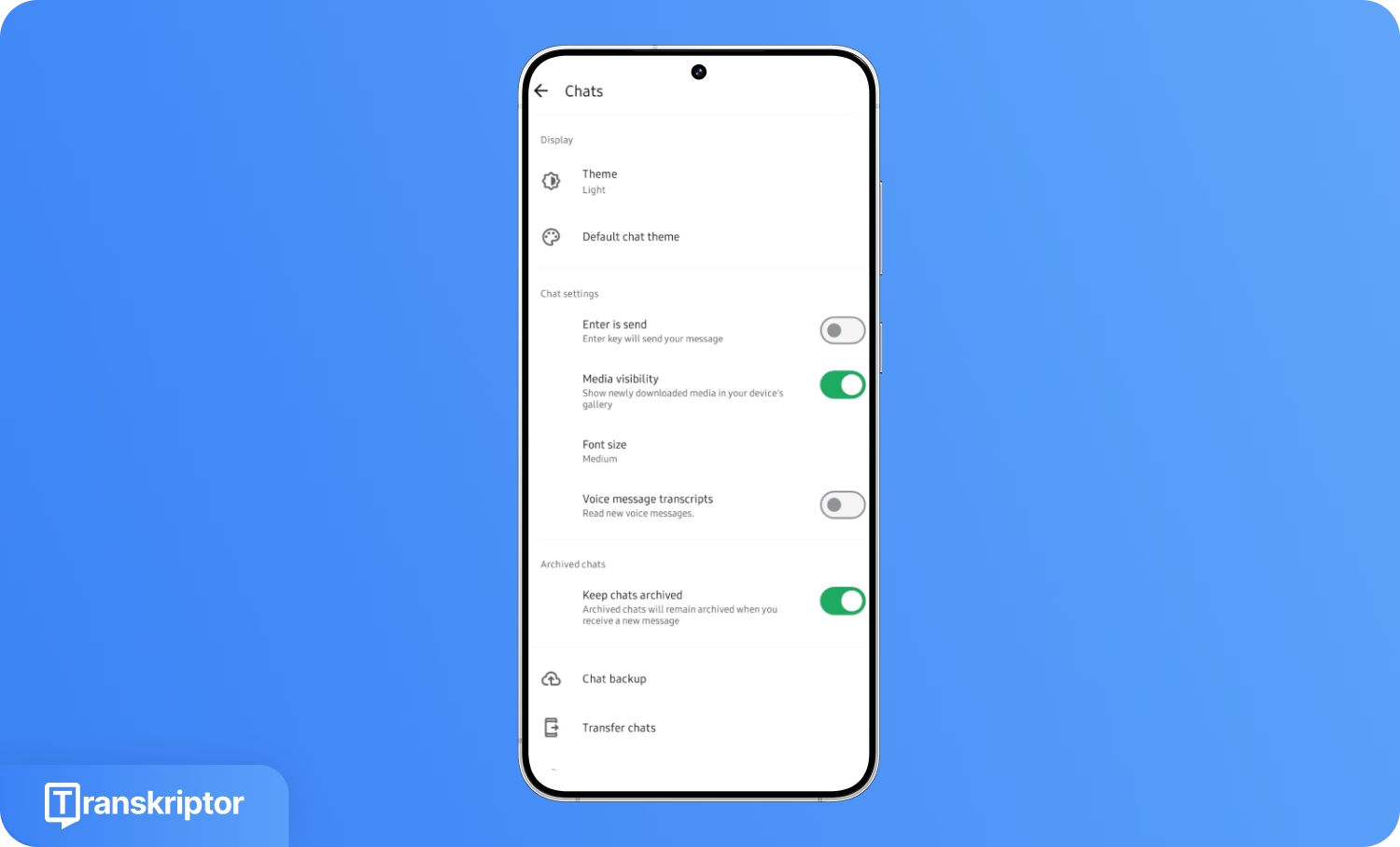
- Enable the voice message transcripts feature. In WhatsApp, tap the three-dotted icon in the top-right corner, then go to Settings > Chats > Voice message transcripts.
- Tap Choose language and select the transcription language. Then tap Set up now and wait for the language pack to download.
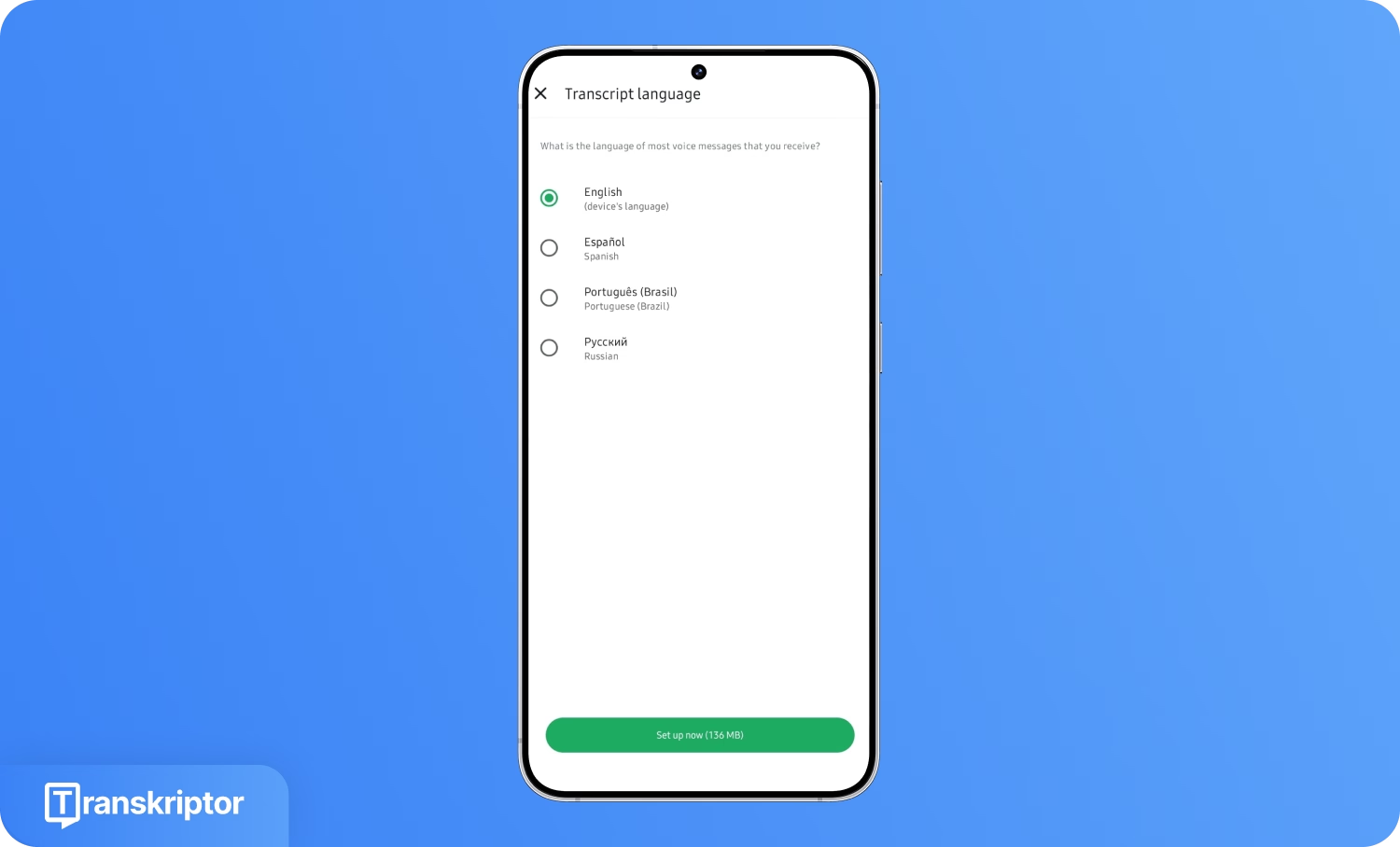
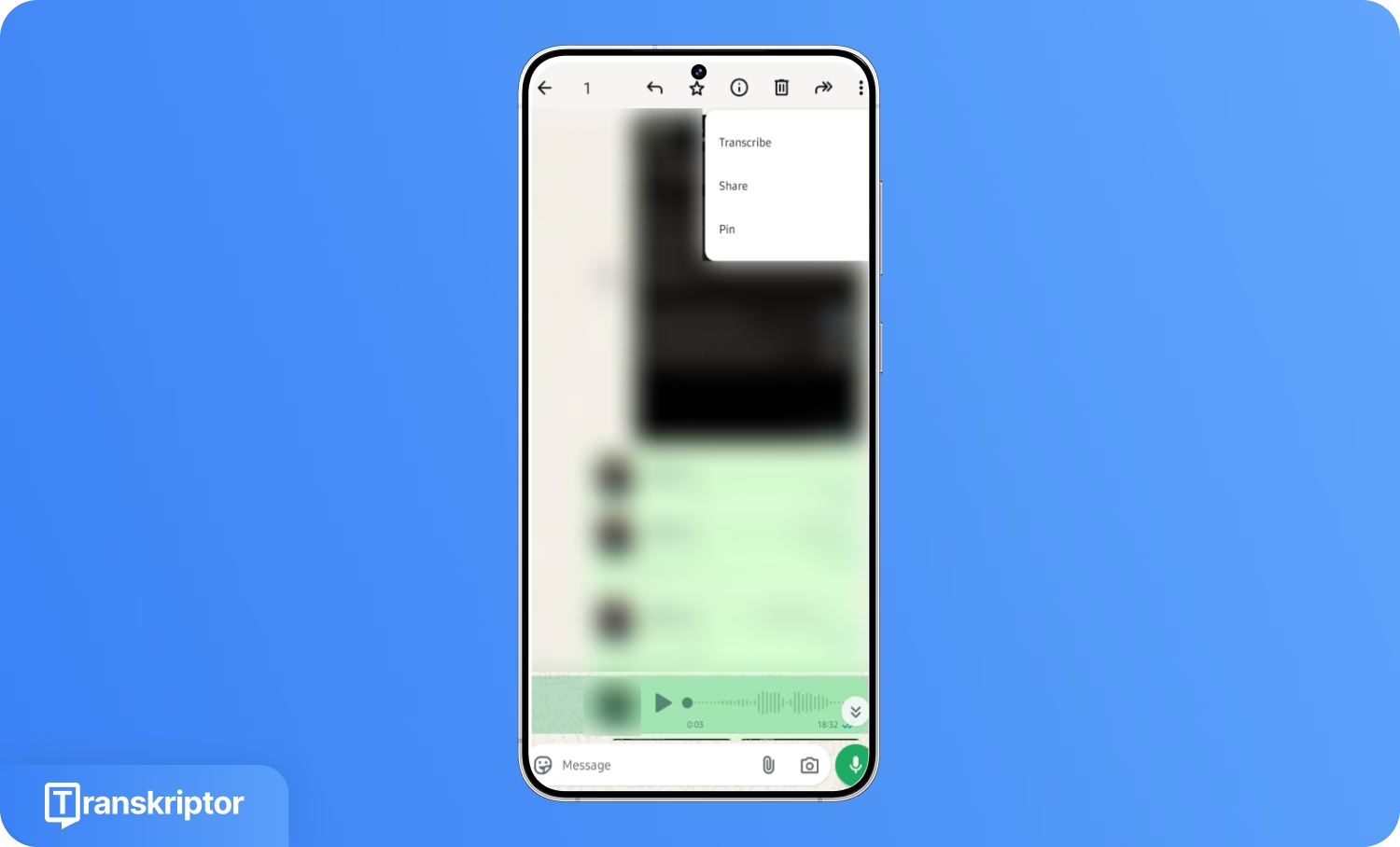
Note: If the "Transcript not available" error appears, the issue often results from mismatched language settings or high background noise interfering with speech recognition accuracy.
- Open the chat and find the voice message. Tap and hold the message, then select the three-dotted icon at the top right and choose Transcribe for audio transcription. The transcript will appear directly below the voice message.
How to Integrate Voice Assistant with WhatsApp?
Voice assistants such as Google Assistant and Siri allow users to send WhatsApp messages using voice commands and hands-free messaging. The interaction occurs through the assistant's voice interface rather than WhatsApp's keyboard-based speech-to-text input.
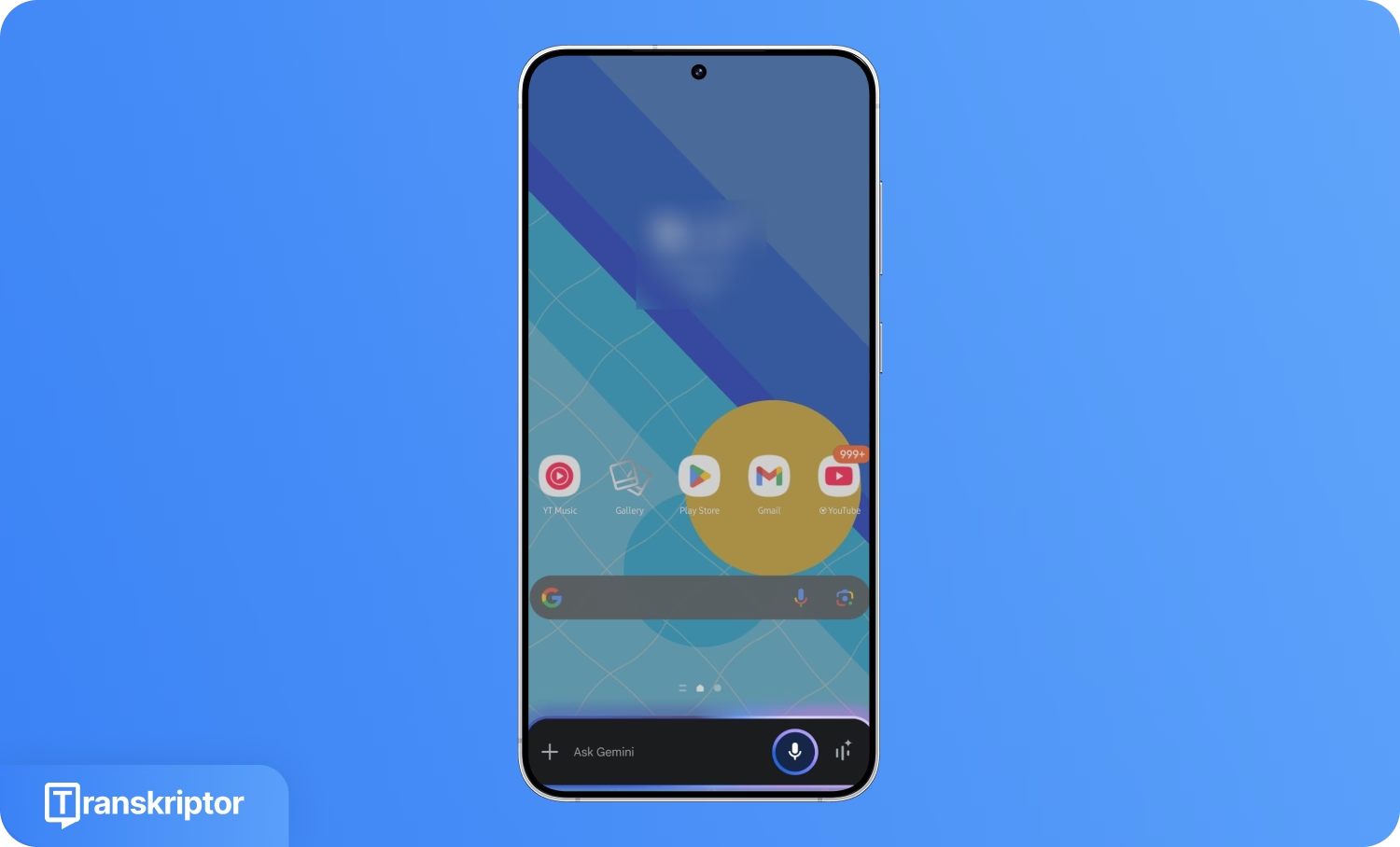
- Activate the voice assistant using a trigger phrase like "Okay Google" (Android) or "Hey Siri" (iPhone) for voice commands.
- Say a command such as "Send a message to Allen from WhatsApp" to initiate hands-free messaging.
- Dictate your message and confirm with "Send it." The assistant will then send the WhatsApp message using speech recognition technology.
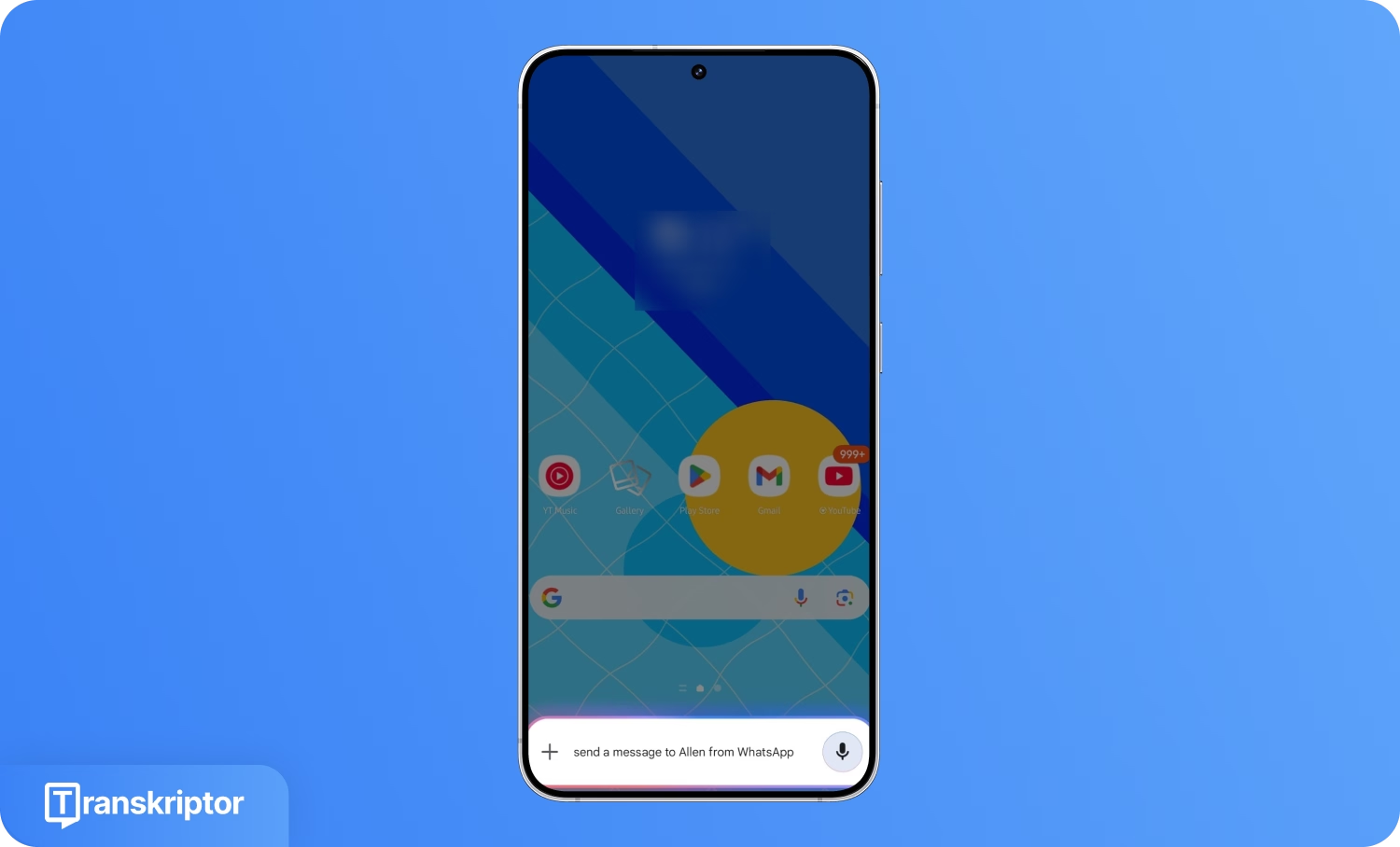
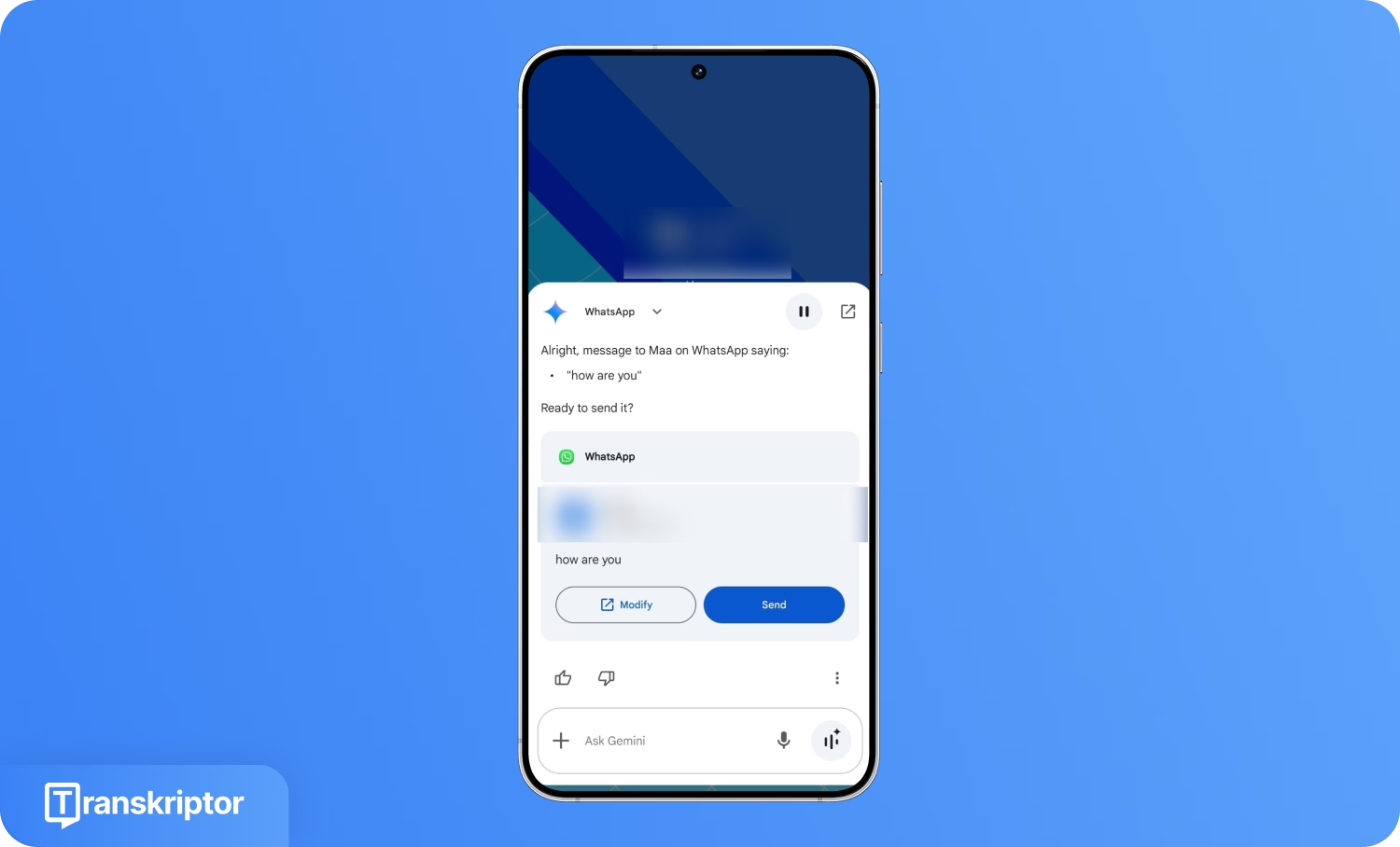
Voice assistants offer convenience, though performance often depends on background noise levels, accent clarity, and phonetic similarity of spoken words during voice input.
How to Transcribe WhatsApp Messages with Third-Party Apps?
When transcription accuracy must exceed built-in limits or support is required for additional languages, external transcription platforms such as Transkriptor offer editing capabilities, export options, and professional-grade audio-to-text processing.
Follow the six steps to transcribe WhatsApp audio with Transkriptor.
- Right-click or tap and hold the voice message, then select the Share button.
- Email the file to yourself or download it directly to your device for speech-to-text processing.
- Visit the Transkriptor website, sign up or log in, and access the main dashboard for audio transcription services. Tap Upload & Transcribe.
- Upload the WhatsApp audio from your device. Choose the correct language, select Transcription service, and configure options like speaker count and destination under Advanced Settings for optimal speech recognition. Then tap Transcribe.
- Wait for the transcription to complete. Review the result by playing the audio alongside the transcript, fixing errors, and relabeling speakers as necessary for accurate voice typing output.
- Once satisfied, choose from the available export formats to download or share the completed transcript for professional use.
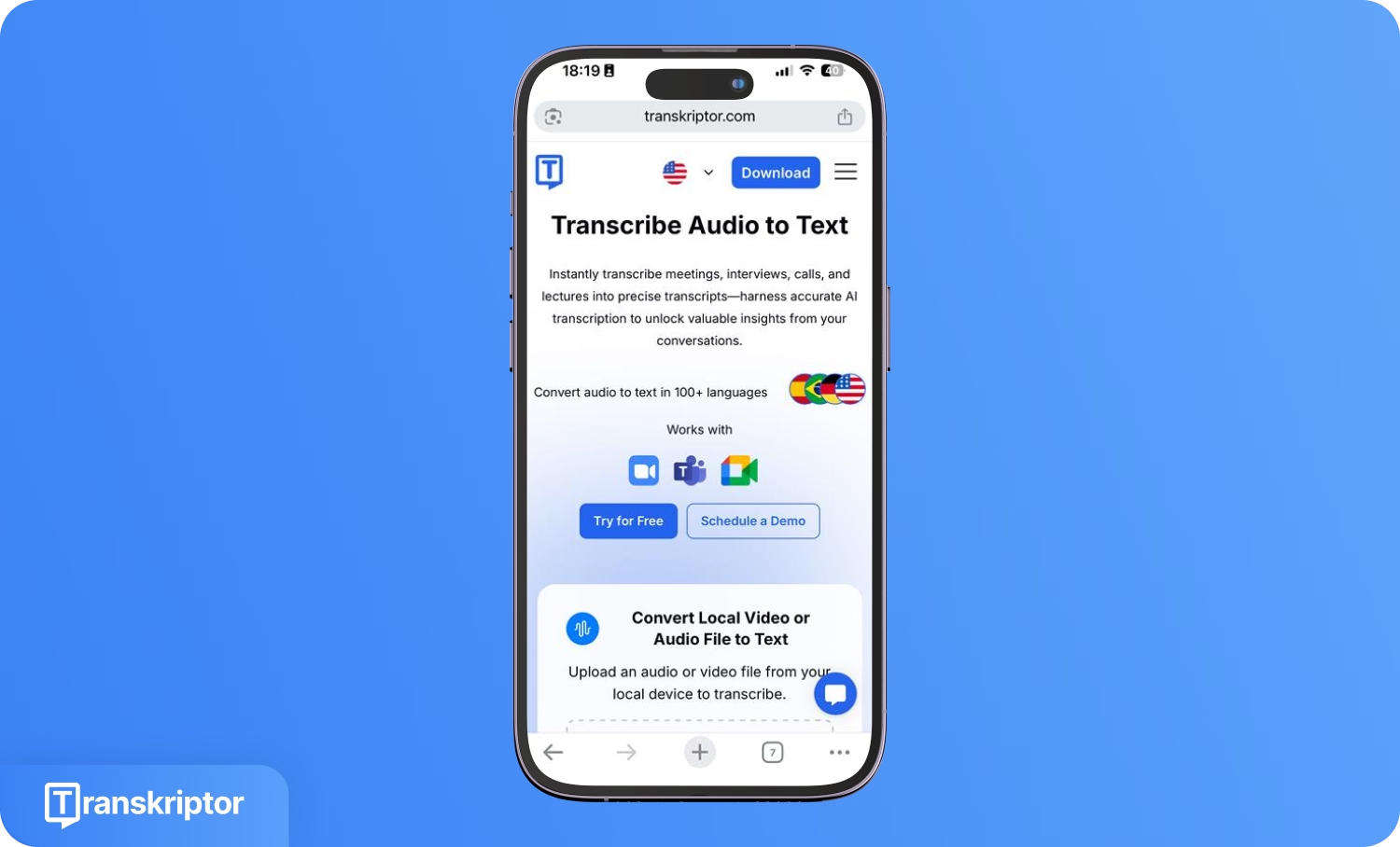
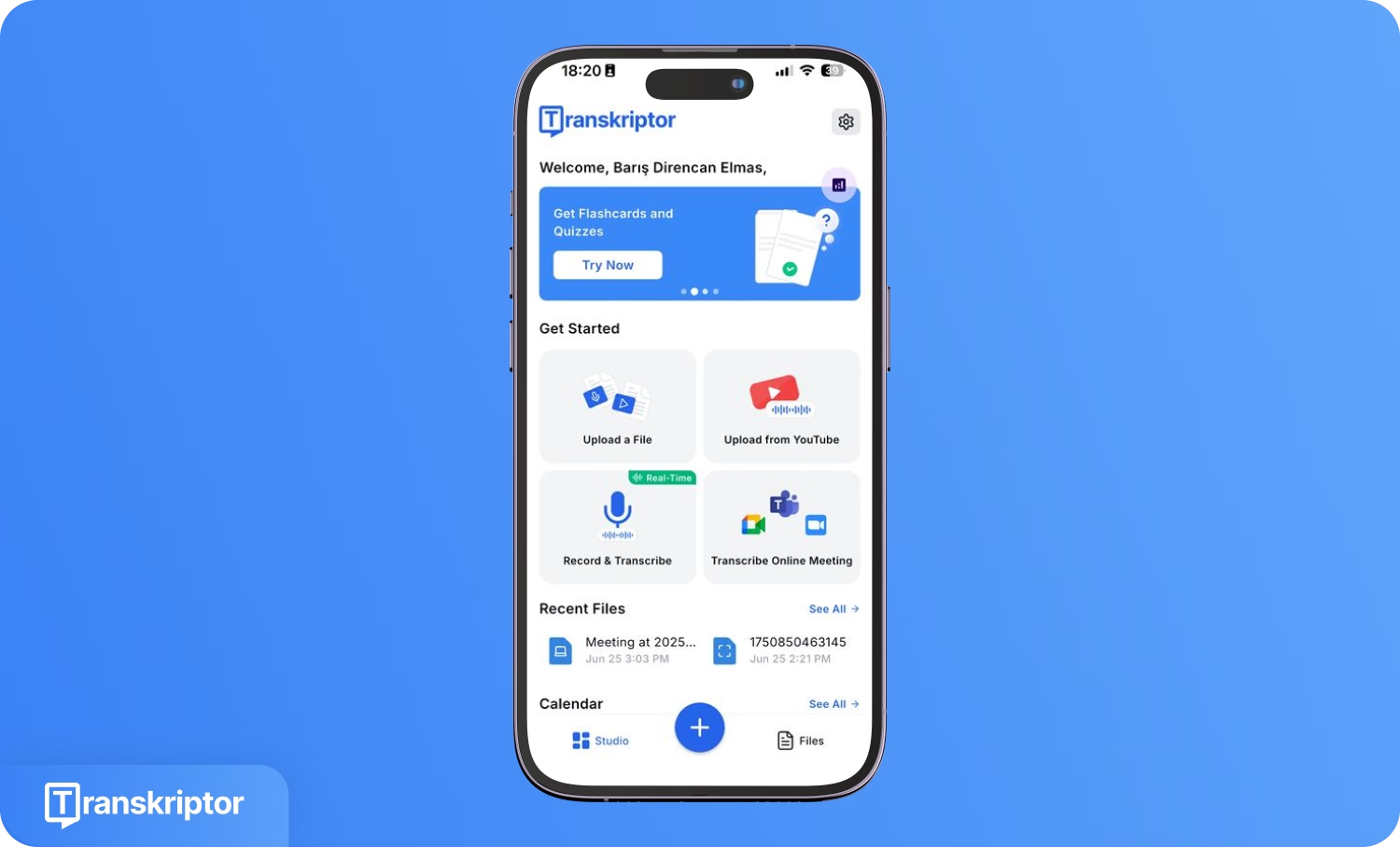
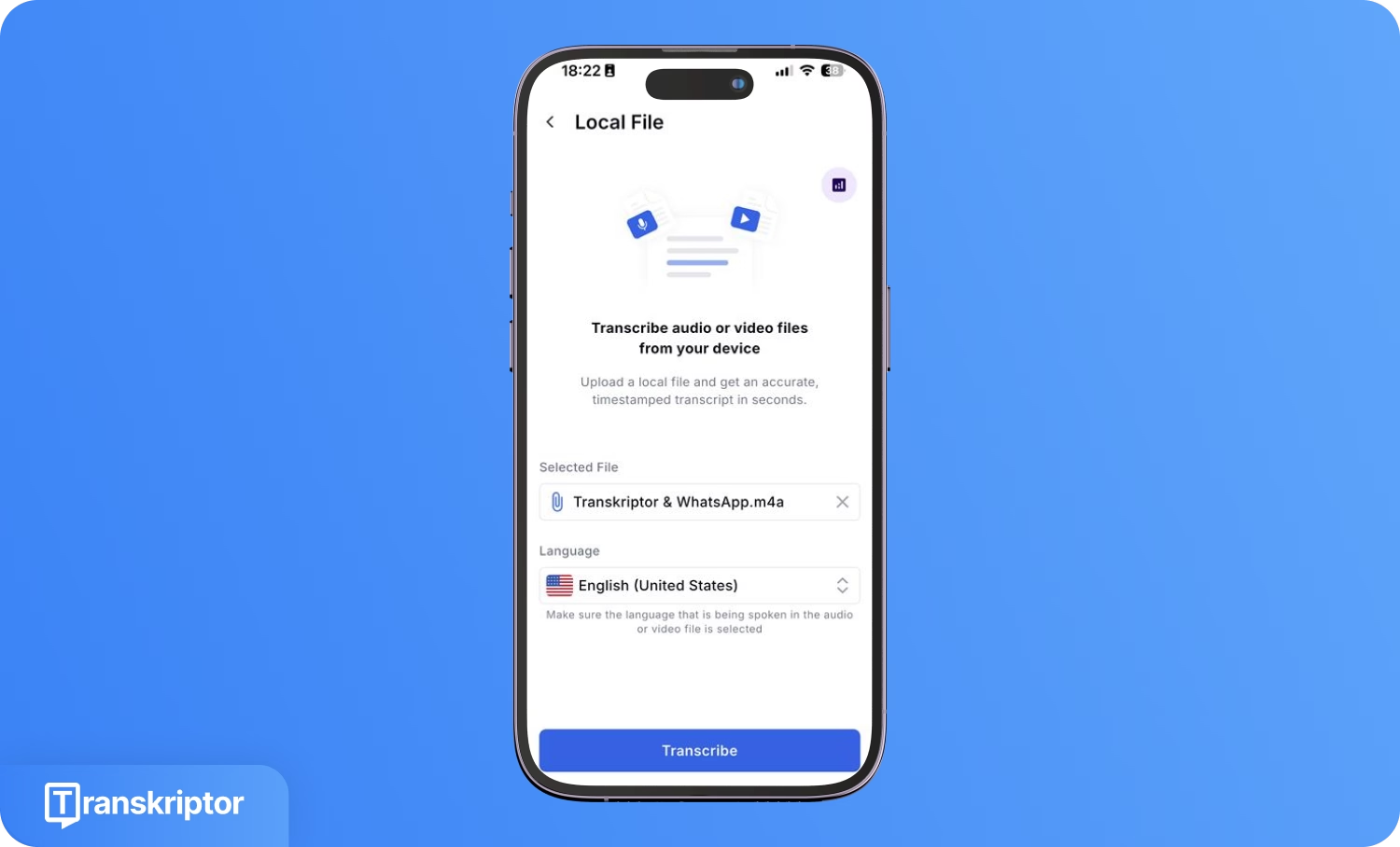

Conclusion
WhatsApp’s built-in dictation and transcription capabilities support both message input and audio review through voice commands and speech recognition. Voice-based interaction enables communication in diverse environments and serves a range of accessibility needs.
When configured correctly and used in appropriate conditions, these voice-input functions allow fast, hands-free communication across devices. In cases of persistent performance issues, restarting WhatsApp and verifying all voice and language settings typically resolves compatibility concerns.
Frequently Asked Questions
Check that microphone permissions are enabled in your device settings and that your keyboard language matches your spoken language. Hold the globe icon (iOS) or spacebar (Android) to set the correct language. Update WhatsApp if the feature is still missing.
Dictation converts your speech into editable text using the keyboard's microphone icon. Voice messages record audio that recipients hear by playing back. Use dictation when you want to send text, and voice messages when you want to send audio.
Yes, but you need to set your keyboard to the correct language first. Hold the globe icon (iOS) or spacebar (Android) to select your language. Android supports English, Spanish, Portuguese, and Russian. iOS supports over 20 languages.
Dictation accuracy depends on speaking clearly, quiet environments, and proper language settings. Research shows speech recognition can achieve 95% accuracy in optimal conditions. Always review and edit the transcribed text before sending to ensure accuracy.

